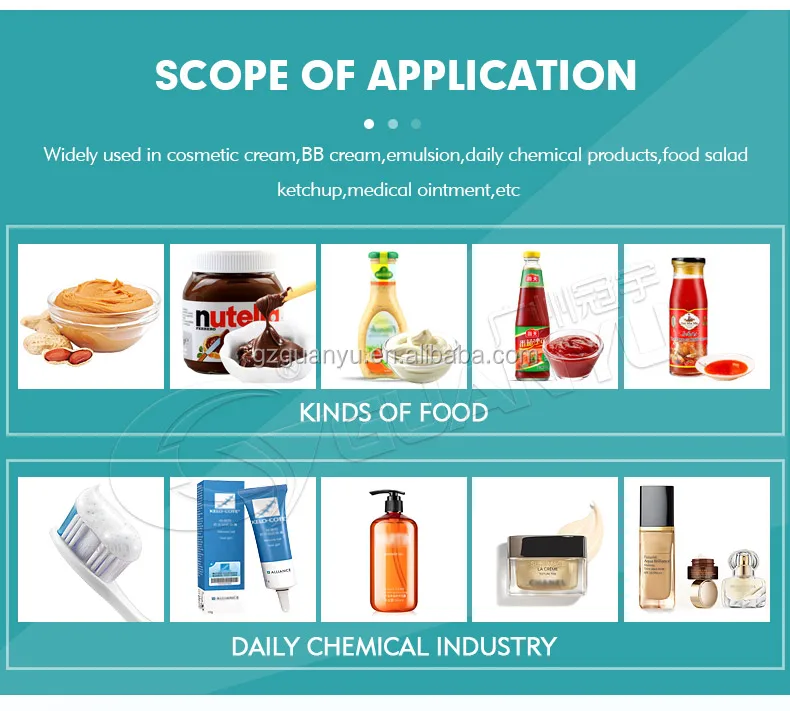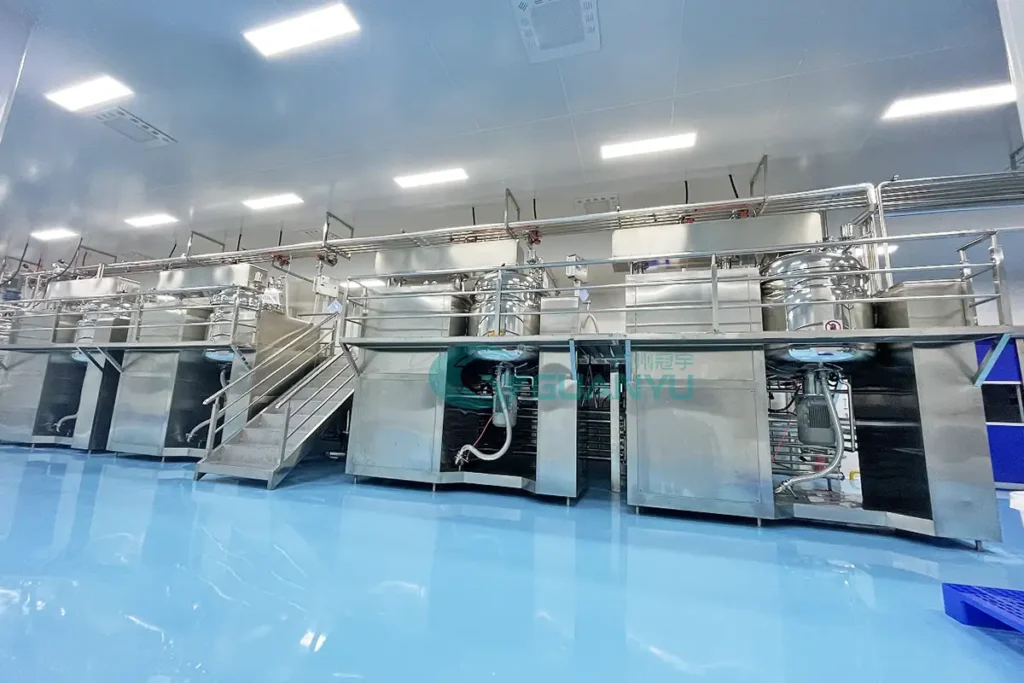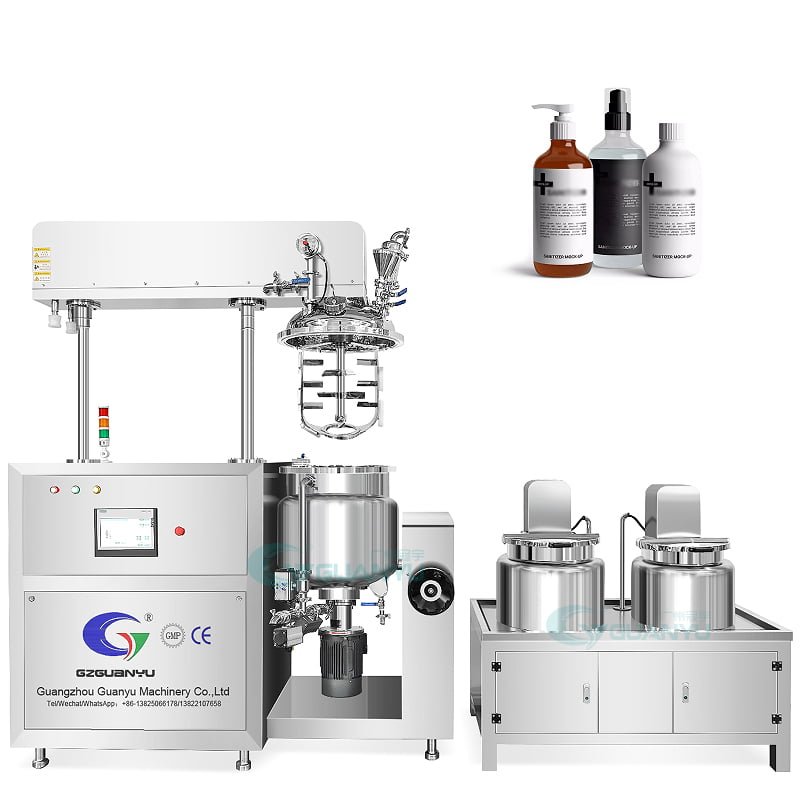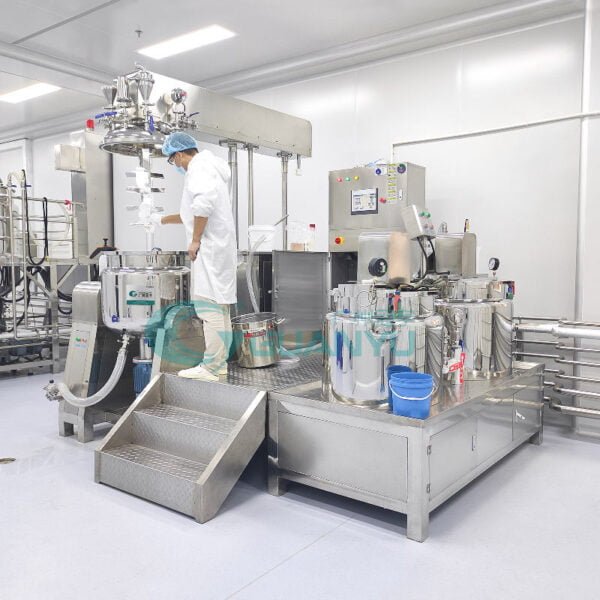真空乳化搅拌机购买指南
我. 精确选择最合适的真空乳化混合器
采购真空乳化混合器是将设备与您的特定要求相匹配的细致过程, 需要全面考虑多种因素. 作为加工制造商或最终用户, 适当的设备选择直接影响生产效率和产品质量. 该综合指南将有条不紊地分析关键注意事项, 促进根据您的需求量身定制的无缝采购过程.
二. 揭示真空乳化搅拌机的工作原理
2.1 真空乳化混合器的定义
真空乳化混合器是一种高效的设备,可利用真空负压产生的强大搅拌力,以彻底融合和乳化各种液体和实心原材料.
2.2 原理分析
该设备在密封的容器中创建真空环境, 搅拌组件的高速旋转产生有效的离心力. 这种力使原材料全面分散和混合, 颗粒物彻底乳化, 实现均匀稳定的均匀混合物.
2.3 应用区域
真空乳化搅拌机在各种行业中找到广泛的应用, 满足广泛的混合和乳化要求. 这些多功能机器在食品和饮料领域广泛使用,用于混合和均质成分(例如调味料), 调味料, 和乳制品. 制药行业依靠真空乳化搅拌机生产软膏, 面霜, 和其他局部配方, 确保精确的乳化和均匀性. 在化妆品行业, 这些搅拌机对于创建乳液乳液是必不可少的, 面霜, 和其他个人护理产品. 此外, 真空乳化搅拌机在化学和油漆行业中起着至关重要的作用, 促进颜料的混合和分散, 树脂, 和其他组件.
三、. 分析各种真空乳化混合器
采用液压能力来驱动搅拌器的垂直提升和降低运动, 这种类型可以促进间歇性喂养和排放操作, 提供方便的维护和适合高粘度材料的适用性.
3.2 底部搅动类型
安装在圆锥容器底部的搅拌组件, 这种类型的特征是喂食入口和顶部排出的门, 借用紧凑的结构和简单的操作.
3.3 惯性转子类型
配备高速旋转转子, 这种类型会产生巨大的离心力和搅拌功率, 使其适合粘性材料和剪切敏感的物质.
四号. 购买真空混合器时需要考虑的因素
4.1 混合材料的类型
评估混合材料的物理和化学特性, 例如粘度, 密度, 温度, 和其他特征, 是匹配适当真空乳化混合器模型的先决条件. 此初步评估确保兼容性和优化性能.
4.2 生产能力要求
根据公司的生产规模, 批量尺寸, 和预期的吞吐量, 至关重要. 准确确定生产需求对于有效的运营至关重要.
4.3 自动化和人机相互作用
先进的真空乳化搅拌机包含自动控制系统和用户友好的人机接口. 在选择过程中, 必须评估所需的自动化和操作便利水平以满足您的特定工作流程和人员配备.
4.4 安装和维护注意事项
不同的真空乳化混合器模型的安装空间要求可能会有所不同, 维护可访问性, 和长期运营成本. 必须全面评估这些因素以确保无缝集成, 有效的维修, 和经济有效的操作.
4.5 供应商建议: Guanyu机械
拥有数十年的行业经验, Guanyu机械公司在真空乳化搅拌器领域中积累了广泛的专业知识. 他们不仅提供行业领先的产品,而且还可以量身定制解决方案,以满足各个公司的独特需求. Guanyu机械提供全面的生命周期服务和支持, 使它们成为大型企业和小型工厂的值得信赖的合作伙伴.

V. 高效设备利用的关键
5.1 标准化安装过程
按照设备手册的说明, 选择合适的位置, 并根据既定规范安装混合器将有助于避免在随后的使用和操作期间避免潜在的问题.
5.2 定期维护和维修
制定定期维护计划至关重要. 这包括定期检查和更换佩戴零件, 校准和调整设备, 并进行诊断检查以始终确保最佳的工作条件.
5.3 操作员培训和技能开发
为操作员提供全面的理论和动手培训是必不可少的. 通过标准化操作程序并培养熟练的劳动力, 人类的操作错误可以在最大程度上最小化, 进一步提高生产率和产品质量.
vi. 立即采取行动, 采购理想的设备
现在您对工作原则有透彻的了解, 分类, 和真空乳化混合器的选择标准, 是时候采取决定性行动并开始采购旅程了. 冠宇机械公司 将与您紧密合作,以量身定制与您独特需求保持一致的最佳解决方案. 他们的专家团队将在整个选择过程中提供专业指导, 确保明智的决定. 此外, Guanyu机械将在安装过程中提供全面的支持服务, 调试, 和持续的维护, 确保无缝过渡并最大化投资的绩效和寿命.



我觉得你文章的标题和内容不符哈哈. 只是在开玩笑, 主要是我读完文章后有一些疑问.